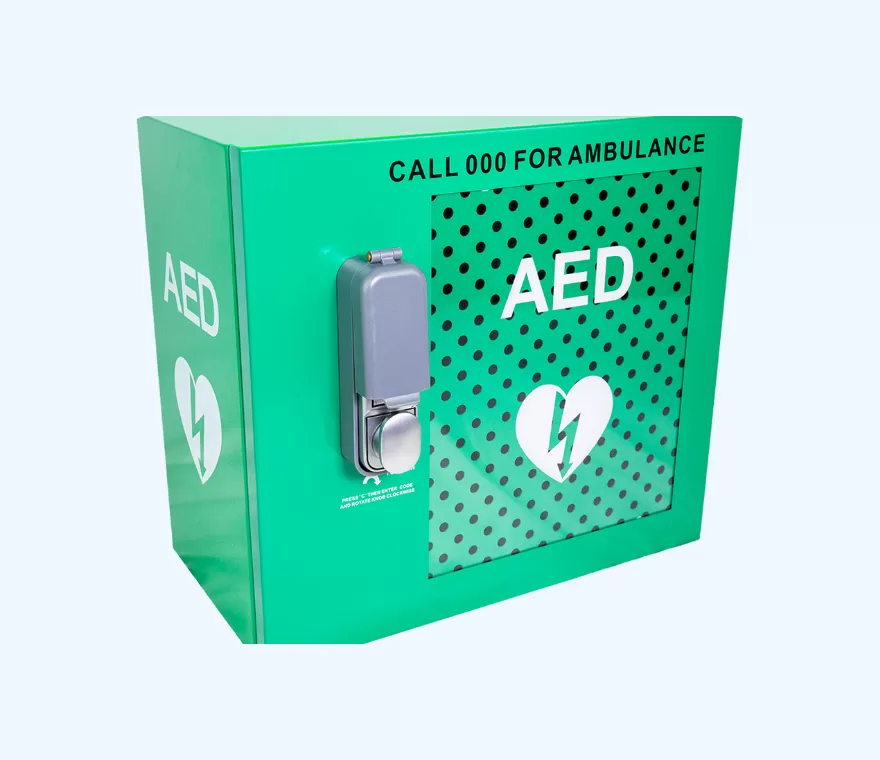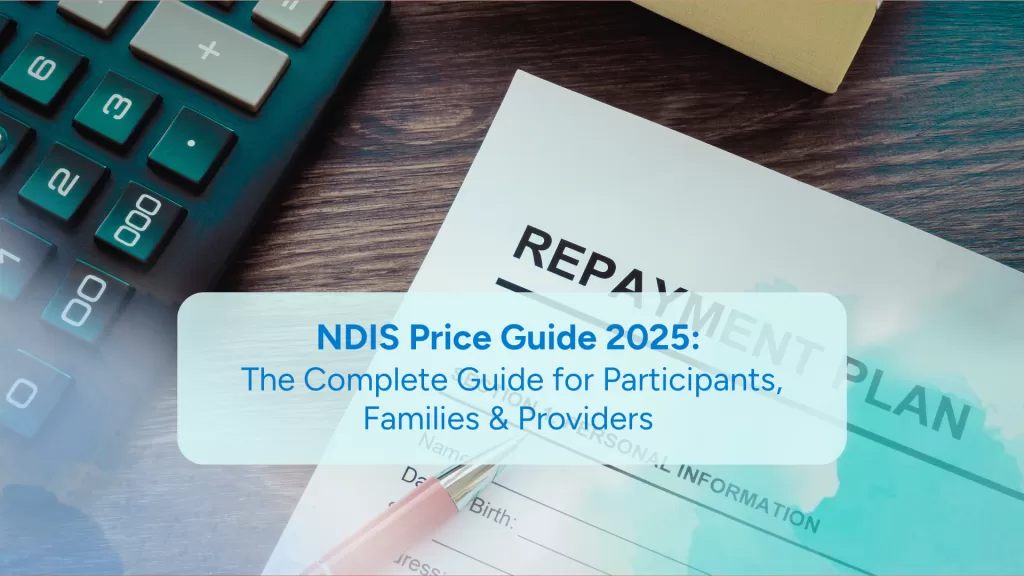ADHD symptoms can show up in many ways and at any age, often influencing how a person focuses, manages impulses, and regulates their energy levels. Understanding the ADHD meaning — Attention Deficit Hyperactivity Disorder — helps families, carers, and individuals recognise that ADHD is more than restlessness or distraction. It is a neurodevelopmental condition that affects thinking, behaviour, and emotions in unique and deeply individual ways.
While ADHD is often identified in childhood, many people continue to experience symptoms throughout life. These can include inattention, hyperactivity, impulsivity, or emotional sensitivity. Yet, with the right knowledge and support, ADHD can be managed in ways that nurture confidence, connection, and independence.
This guide explores everything you need to know about ADHD; from common ADHD symptoms and gender differences to treatment for ADHD symptoms and how the NDIS can help. Whether you are a parent, carer, or adult seeking understanding, our goal is to provide clarity, compassion, and practical direction for navigating ADHD and accessing supports such as NDIS therapy services for children or NDIS psychology and counselling services.
What is ADHD?
ADHD meaning — Attention Deficit Hyperactivity Disorder — is a neurodevelopmental condition that affects how a person focuses; manages impulses; and regulates energy levels. While often discussed in childhood, ADHD can be experienced at any age and looks different for everyone.
People living with ADHD may experience:
Inattention: finding it hard to concentrate or stay organised
Impulsivity: acting quickly without thinking things through
Hyperactivity: feeling restless or needing to move often
It’s important to remember that ADHD is not a measure of ability or intelligence. Many people living with ADHD are creative, intuitive, and highly capable when supported in ways that suit their learning and thinking styles.
Through the NDIS, supports such as NDIS therapy services for children and NDIS plan management can help families access tailored strategies and professional guidance. These services focus on developing emotional regulation, executive functioning, and confidence; empowering people to reach their goals with compassion and understanding.

Common Core Symptoms of ADHD
Understanding the common ADHD symptoms can help families, carers, and individuals recognise patterns and seek the right supports early. While ADHD presents differently for everyone, it generally involves challenges with attention, impulse control, activity levels, and emotional regulation.
Many people living with ADHD describe feeling as though their minds move faster than their surroundings. This can affect everyday life; from school and work to relationships and self-esteem. Recognising these experiences isn’t about labelling; it’s about building awareness and empowering people to access understanding and support through services like NDIS therapy services for children or NDIS occupational therapy supports.
Common signs include:
- Inattention; difficulty staying focused or following instructions
- Hyperactivity; restlessness or constant movement
- Impulsivity; acting or speaking before thinking
- Emotional regulation challenges; finding it hard to manage frustration or strong feelings
Every person’s experience is unique. Some may show mainly inattentive traits, others more hyperactive or impulsive behaviours, while many experience a combination.
If you’re exploring supports for ADHD, NDIS support coordination can help connect you with professionals who understand how to create structure, strategies, and positive routines for daily life.
Inattentive Symptoms
Inattentive ADHD symptoms often go unnoticed because they don’t always involve high energy or disruptive behaviour. People living with this type may seem quiet, reflective, or “in their own world”, but their minds are often deeply active.
Common traits can include:
- Forgetfulness or frequently misplacing items
- Difficulty following detailed instructions or completing tasks
- Trouble focusing on one activity at a time
- Appearing to daydream or zone out during conversations (daydreaming ADHD)
- Becoming easily distracted, even by small changes in the environment
This type of ADHD can be especially challenging in classroom or work settings, where sustained attention is expected. People may internalise frustration or feel misunderstood.
Recognising these patterns allows families and educators to respond with compassion rather than criticism; using structured routines, gentle reminders, and strengths-based approaches. With the right support, such as NDIS therapy services for children, people living with inattentive ADHD can thrive academically, socially, and emotionally.
Hyperactive-Impulsive Symptoms
Hyperactive-impulsive ADHD symptoms are often more visible and can affect both children and adults. This presentation includes a strong need for movement, quick reactions, and difficulty pausing before acting; all traits linked to how the brain manages energy and control.
Common signs include:
- Feeling constantly “on the go” or unable to sit still
- Talking excessively or interrupting others
- Struggling to wait turns or stay patient in lines or group activities
- Acting without considering consequences; taking risks impulsively
- Restlessness that continues even during quiet or structured times
In children, this may look like running, climbing, or blurting out answers; in adults, it can show as overcommitment, fidgeting, or impulsive decision-making.
With understanding and tailored strategies, such as those offered through NDIS behaviour support services; people can learn ways to channel energy positively and build emotional self-awareness.
ADHD Symptoms by Age
Understanding how ADHD symptoms in kids, teens, and adults can change over time helps families and individuals recognise that this condition doesn’t “go away” it simply evolves. ADHD is a lifelong neurodevelopmental condition, and the signs often shift as people gain new responsibilities, environments, and coping strategies.
Recognising these differences can make a big impact when planning supports through the NDIS. Whether it’s NDIS therapy services for children, NDIS support coordination, or NDIS behaviour support services, the right guidance can help people of all ages manage challenges while building on their strengths.
ADHD Symptoms in Children
In children, ADHD often presents as hyperactivity, impulsivity, and difficulty following instructions. Kids may seem to have endless energy, move constantly, or find it hard to focus on one task for long periods.
Common traits include:
- Struggling to sit still during meals or class
- Acting before thinking, such as blurting out answers
- Difficulty following multi-step directions
- Losing focus during tasks that don’t feel engaging
- Emotional outbursts when routines change
Children living with ADHD are often curious, enthusiastic, and creative. With patience, structure, and support from professionals; such as those available through NDIS therapy services for children; they can thrive in both learning and social environments.
Not sure what supports apply to your child? Chat with our friendly team today to explore the best options for your family.
ADHD Symptoms in Teens
As children grow, ADHD symptoms in teens can become more internal. While hyperactivity may decrease, emotional and organisational challenges often emerge. Teenagers might feel easily overwhelmed, frustrated, or misunderstood; especially as academic and social pressures increase.
Common signs include:
- Struggles with time management and deadlines
- Emotional ups and downs; frustration over small issues
- Forgetting assignments or losing track of personal items
- Difficulty maintaining focus during long classes or study sessions
- Challenges balancing school, work, and friendships
For teens, confidence and emotional wellbeing are key. Accessing the right supports, such as NDIS occupational therapy supports, can help them develop life skills, manage stress, and build independence.
ADHD Symptoms in Adults
ADHD symptoms in adults often look different again. While adults may have learned to mask or manage some behaviours, challenges with focus, organisation, and emotional regulation can still affect work and relationships.
Common signs include:
- Struggling with time management or procrastination
- Forgetting appointments, deadlines, or tasks
- Feeling restless or constantly switching between projects
- Difficulty prioritising or maintaining routines
- Experiencing hyperfocus; becoming deeply absorbed in specific interests for long periods
Many adults living with ADHD also describe strong creativity, resilience, and problem-solving skills. Recognising how ADHD influences daily life allows for self-compassion and growth. With support from NDIS psychology and counselling services, people can learn strategies to manage stress and build fulfilling routines.
ADHD looks different for everyone; but with understanding, empathy, and the right NDIS supports, people of all ages can live balanced, empowered, and meaningful lives.
ADHD Symptoms by Gender
Understanding ADHD symptoms in women and men helps highlight how the condition can look very different depending on the individual. While ADHD is equally common across genders, research shows that women and girls are often underdiagnosed or misdiagnosed. This is partly because their symptoms are less visible and more internalised than the classic hyperactive behaviours often associated with ADHD in men.
Recognising these differences matters; not for comparison, but for understanding and support. With the right awareness and access to services such as NDIS psychology and counselling services or NDIS therapy services for children, people can receive early guidance and strategies tailored to their needs.
ADHD in Women
Female ADHD symptoms often centre around inattention, emotional sensitivity, and masking behaviours. Many women learn to hide or compensate for their struggles, which can make their experiences less noticeable to others. This “masking” may involve overworking, people-pleasing, or copying others’ behaviours to fit in socially or professionally.
Common signs of ADHD in women include:
- Difficulty focusing, even on important tasks
- Feeling easily overwhelmed or emotionally exhausted
- Overthinking or self-doubt due to constant mental load
- Forgetfulness or disorganisation despite strong effort
- Internal restlessness rather than outward hyperactivity
Because these symptoms are quieter, women may be labelled as anxious, unmotivated, or overly emotional; when in reality, they are navigating ADHD-related challenges. Early recognition and supportive strategies can make a huge difference, helping women build self-compassion and balance through tools like NDIS support coordination.
ADHD in Men
When it comes to ADHD in men, symptoms are often more externalised. Boys and men may show higher levels of physical activity, impulsivity, and risk-taking behaviour. This visibility means ADHD is often recognised earlier in males, though it can still be misunderstood or stigmatised.
Common traits may include:
- Difficulty sitting still or waiting turns
- Speaking or acting before thinking
- Interrupting conversations or tasks frequently
- Taking on multiple projects impulsively
- Struggling with frustration or impatience
Men living with ADHD often benefit from practical, action-based strategies and structured routines. Access to tailored supports, such as NDIS behaviour support services can help manage energy, improve focus, and enhance emotional regulation.
ADHD shows up differently for everyone. Whether you identify as male, female, or non-binary, your experience is valid and with the right understanding and care, thriving is absolutely possible.
Combined ADHD and Emotional Symptoms
Many people experience moderate ADHD symptoms alongside emotional challenges such as anxiety or depression. This overlap is common and understandable; managing focus, motivation, and organisation on a daily basis can naturally affect how someone feels about themselves and the world around them.
Emotional dysregulation is one of the most significant behavioural symptoms of ADHD. It can look like strong reactions to stress, difficulty calming down after conflict, or feeling easily overwhelmed by everyday situations. These emotional shifts are not a sign of weakness; they reflect how the ADHD brain processes information and responds to stimulation.
Over time, people may also experience:
- Low self-esteem, especially after repeated criticism or misunderstanding
- Motivation struggles, including difficulty starting or finishing tasks
- Increased stress or burnout, particularly when trying to mask or appear organised
Understanding and addressing these experiences can make daily life more manageable and fulfilling. Support from qualified professionals such as those offering NDIS psychology and counselling services or NDIS behaviour support services can help build emotional regulation skills and promote self-acceptance.
When to Seek Professional Help
Recognising the symptoms of ADHD diagnosis can be the first step towards better understanding and support. If you or someone you care for is struggling with focus, impulsivity, or emotional regulation that affects daily life, it may be time to consider an ADHD assessment. Seeking professional help early can make a big difference in managing challenges and building confidence.
An ADHD diagnosis is not about labels; it is about clarity, self-awareness, and access to the right supports. For children, it can lead to better learning strategies and classroom adjustments. For adults, it can improve work, relationships, and emotional wellbeing.
How the Assessment Works
The assessment process typically involves several steps, including:
- Initial screening using questionnaires and interviews to identify common ADHD patterns
- Comprehensive evaluation by a qualified psychologist or psychiatrist
- Review of personal history to understand how symptoms affect daily functioning
- Feedback and recommendations for treatment, therapy, or NDIS supports
Professionals such as psychologists, psychiatrists, or paediatricians play a vital role in confirming a diagnosis and creating an individualised care plan. This may include therapy, coaching, or medical management to help people reach their goals.
If ADHD is identified, accessing the NDIS can provide essential support for long-term wellbeing. Services like NDIS psychology and counselling services, NDIS therapy services for children, or NDIS support coordination can help create structured routines, develop emotional skills, and improve everyday confidence.
Treatment Options and Next Steps
Finding the right treatment for ADHD symptoms can make daily life more manageable, structured, and fulfilling. While ADHD cannot be “cured,” it can be effectively managed through a combination of professional guidance, therapy, medication, and lifestyle strategies. Each person’s journey is unique, and with the right supports in place, people living with ADHD can thrive at school, work, and home.
Working with health professionals and accessing services like NDIS psychology and counselling services or NDIS behaviour support services can help create a plan that suits each person’s individual strengths, goals, and needs.
Common Approaches to ADHD Management
- Medication
Medication can be a helpful part of ADHD management for many people. It works by improving focus, attention, and impulse control. A psychiatrist, paediatrician, or GP usually oversees this process to ensure the treatment is safe and effective. Medication is not the only option but can form part of a balanced support plan. - Therapy and Coaching
Therapies such as Cognitive Behavioural Therapy (CBT) focus on practical strategies for emotional regulation, time management, and problem-solving. Behavioural coaching and counselling can also help build confidence and develop positive habits. These approaches are often available through NDIS therapy services for children and adults alike. - Organisation and Routine Tools
Tools such as planners, visual schedules, and phone reminders can make a big difference in managing daily tasks. Consistent routines help reduce overwhelm and provide a sense of stability. Many occupational therapists under the NDIS specialise in helping people find systems that work for their unique lifestyles. - Lifestyle and Self-Care
Healthy routines that include regular sleep, balanced meals, and physical activity can support concentration and mood. Mindfulness and relaxation techniques also help people manage stress and stay grounded throughout the day.
With understanding, compassion, and the right professional support, ADHD can be managed in ways that enhance wellbeing and independence.
Living Positively with ADHD
Learning healthy ways of coping with ADHD starts with understanding that ADHD is not just about challenges; it is also linked to many unique strengths. People living with ADHD often show remarkable creativity, energy, and problem-solving abilities. When these strengths are recognised and nurtured, they can become powerful tools for personal growth and success.
Many individuals experience hyperfocus, which allows them to become deeply absorbed in activities they enjoy. When channelled positively, this ability can lead to outstanding achievements in areas like art, technology, business, or creative problem-solving. Similarly, the adaptability and curiosity seen in ADHD can foster innovation and resilience in fast-changing environments.
Other strengths often include:
- Creativity; thinking outside the box and offering fresh ideas
- Resilience; bouncing back from challenges with determination
- Empathy; connecting with others through understanding and emotional awareness
- Passion and drive; bringing enthusiasm to personal and professional goals
Support plays a key role in building these strengths. Accessing services such as NDIS psychology and counselling services or NDIS support coordination can help people develop self-awareness, structure, and emotional wellbeing. Connecting with community networks also helps reduce isolation and builds a sense of belonging.
Living with ADHD is about more than managing symptoms; it is about embracing individuality and using those strengths to create a fulfilling, empowered life. If you’re ready to explore supportive options, chat with our friendly team today to discover how the NDIS can help you thrive.
Summary
ADHD symptoms can look different for everyone, but with awareness, understanding, and the right professional support, people living with ADHD can lead balanced and fulfilling lives. Recognising the symptoms of ADHD diagnosis early helps open doors to tailored strategies and NDIS supports that focus on strengths rather than challenges.
Through a combination of therapy, structure, and emotional support, individuals can build resilience, creativity, and confidence. Services like NDIS behaviour support services, NDIS therapy services for children, and NDIS support coordination can help develop practical skills, maintain daily routines, and encourage personal growth.
ADHD is not a limitation; it is a different way of experiencing and engaging with the world. With empathy, understanding, and support, people living with ADHD can thrive at school, at work, and within their communities; turning their unique strengths into opportunities for growth and inspiration.












